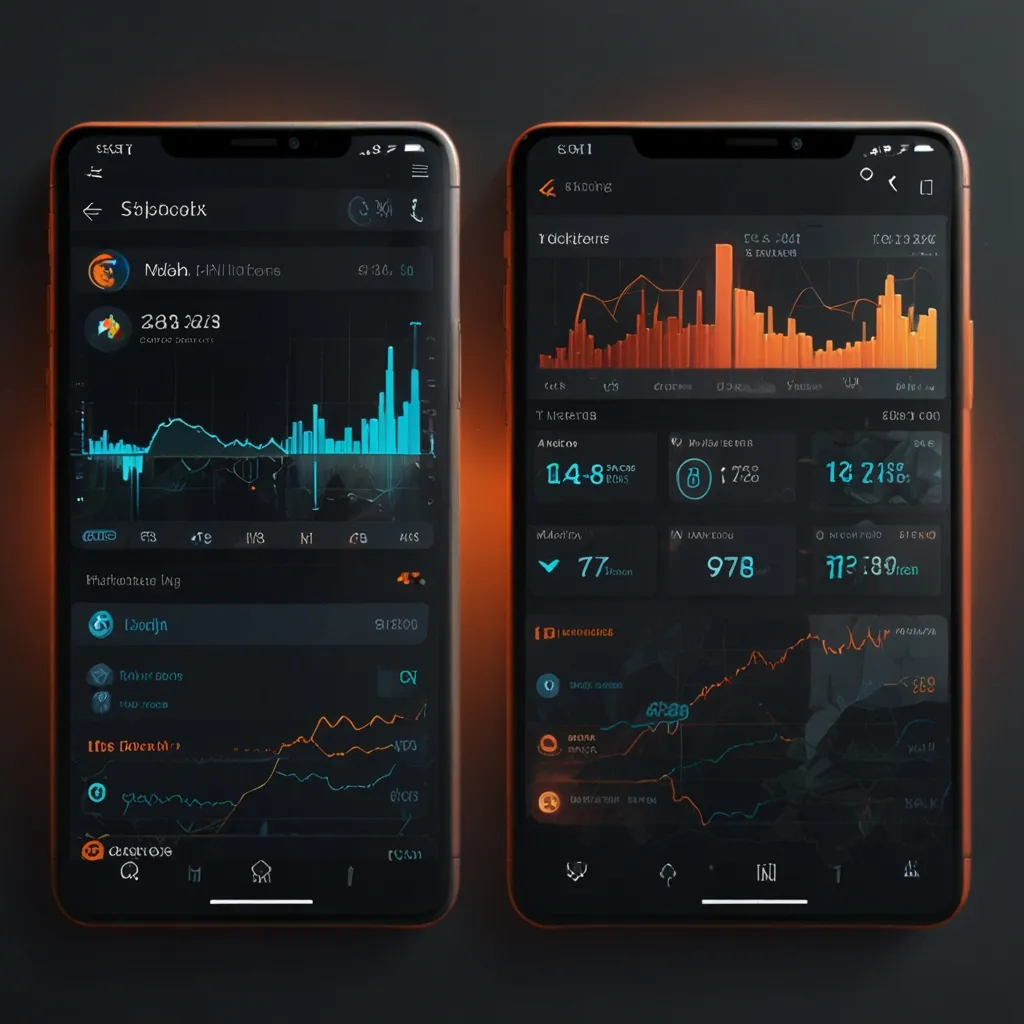The web has evolved significantly since its inception. What started as a platform for static documents has transformed into a rich ecosystem for powerful applications. However, a significant limitation persisted - web applications traditionally required a constant internet connection to function properly. This limitation created a clear distinction between web and native applications. But that’s changing rapidly, thanks to Service Workers.
I’ve spent considerable time implementing Service Workers across various projects, and I can confidently say they’re revolutionizing how we build for the web. Service Workers are JavaScript scripts that operate in the background, independent of web pages, acting as programmable proxies between your application and the network.
What Are Service Workers?
Service Workers are a type of web worker - a JavaScript file that runs on a separate thread from the main browser thread. This separation is crucial as it allows Service Workers to perform operations without blocking the user interface. Unlike regular scripts, Service Workers can intercept network requests, access the cache, and store resources locally.
The most powerful aspect of Service Workers is their ability to continue running even when the user isn’t actively interacting with the application or has closed the browser. This persistence enables functionalities previously exclusive to native applications.
Setting Up a Service Worker
Implementing a Service Worker begins with registration. This tells the browser about the Service Worker and initiates its installation process.
if ('serviceWorker' in navigator) {
window.addEventListener('load', () => {
navigator.serviceWorker.register('/service-worker.js')
.then(registration => {
console.log('Service Worker registered successfully with scope:', registration.scope);
})
.catch(error => {
console.log('Service Worker registration failed:', error);
});
});
}
The registration code checks if the browser supports Service Workers, then registers our Service Worker file. The registration happens asynchronously, returning a promise that resolves once registration completes successfully.
The Service Worker Lifecycle
Service Workers follow a distinct lifecycle: registration, installation, activation, and then running. Understanding this lifecycle is essential for effective implementation.
// Inside service-worker.js
self.addEventListener('install', event => {
console.log('Service Worker installing');
event.waitUntil(
caches.open('static-v1').then(cache => {
return cache.addAll([
'/',
'/index.html',
'/styles.css',
'/script.js',
'/images/logo.png'
]);
})
);
});
self.addEventListener('activate', event => {
console.log('Service Worker activating');
event.waitUntil(
caches.keys().then(cacheNames => {
return Promise.all(
cacheNames.filter(cacheName => {
return cacheName !== 'static-v1';
}).map(cacheName => {
return caches.delete(cacheName);
})
);
})
);
});
During installation, we typically cache static assets required for the application. The event.waitUntil() method ensures the installation process doesn’t complete until all specified assets are cached.
The activation phase is perfect for cleaning up old caches. When updating a Service Worker, it’s common to create a new cache and delete outdated ones during activation.
Intercepting Network Requests
The true power of Service Workers comes from their ability to intercept and handle network requests. This capability is what enables offline functionality.
self.addEventListener('fetch', event => {
event.respondWith(
caches.match(event.request).then(response => {
// Return cached response if found
if (response) {
return response;
}
// Clone the request - request streams can only be used once
const fetchRequest = event.request.clone();
// Make network request if not in cache
return fetch(fetchRequest).then(response => {
// Check for valid response
if (!response || response.status !== 200 || response.type !== 'basic') {
return response;
}
// Clone the response - response streams can only be used once
const responseToCache = response.clone();
// Add response to cache for future
caches.open('static-v1').then(cache => {
cache.put(event.request, responseToCache);
});
return response;
}).catch(() => {
// If both cache and network fail, serve fallback content
if (event.request.headers.get('accept').includes('text/html')) {
return caches.match('/offline.html');
}
});
})
);
});
This code exemplifies a “cache falling back to network” strategy. When a request occurs, we first check if it’s available in the cache. If not, we fetch it from the network, cache the response for future use, then return it to the client.
Advanced Caching Strategies
Different resources benefit from different caching strategies. I’ve learned this through numerous implementations across various project types.
Cache First Strategy
Ideal for static assets that rarely change:
function cacheFirst(request) {
return caches.match(request)
.then(cachedResponse => {
if (cachedResponse) {
return cachedResponse;
}
return fetch(request)
.then(networkResponse => {
return caches.open('static-cache')
.then(cache => {
cache.put(request, networkResponse.clone());
return networkResponse;
});
});
});
}
Network First Strategy
Better for frequently updated content:
function networkFirst(request) {
return fetch(request)
.then(networkResponse => {
caches.open('dynamic-cache')
.then(cache => {
cache.put(request, networkResponse.clone());
});
return networkResponse.clone();
})
.catch(() => {
return caches.match(request);
});
}
Stale While Revalidate
This strategy serves cached content immediately while updating the cache in the background:
function staleWhileRevalidate(request) {
return caches.open('dynamic-cache').then(cache => {
return cache.match(request).then(cachedResponse => {
const fetchPromise = fetch(request).then(networkResponse => {
cache.put(request, networkResponse.clone());
return networkResponse;
});
return cachedResponse || fetchPromise;
});
});
}
Implementing Offline Support
A truly robust web application should gracefully handle offline scenarios. This requires planning for what content to cache and providing appropriate fallbacks.
// Pre-cache the offline page during installation
self.addEventListener('install', event => {
event.waitUntil(
caches.open('offline-cache').then(cache => {
return cache.addAll([
'/offline.html',
'/offline-styles.css',
'/offline-script.js',
'/images/offline-logo.png'
]);
})
);
});
// Serve offline page when network requests for HTML fail
self.addEventListener('fetch', event => {
if (event.request.mode === 'navigate' ||
(event.request.method === 'GET' &&
event.request.headers.get('accept').includes('text/html'))) {
event.respondWith(
fetch(event.request)
.catch(() => {
return caches.match('/offline.html');
})
);
} else {
// Use standard caching strategy for non-HTML requests
event.respondWith(
caches.match(event.request)
.then(cachedResponse => {
return cachedResponse || fetch(event.request);
})
);
}
});
This implementation distinguishes between navigation requests (which load HTML pages) and other resource requests. When a user attempts to navigate to a page while offline, they’ll see our custom offline page instead of the browser’s default error.
Push Notifications with Service Workers
Service Workers enable web applications to receive and display push notifications, even when the user isn’t actively using the application. This feature significantly enhances user engagement.
// Request notification permission
function requestNotificationPermission() {
return new Promise((resolve, reject) => {
if (!('Notification' in window)) {
reject('This browser does not support notifications');
return;
}
if (Notification.permission === 'granted') {
resolve();
return;
}
Notification.requestPermission()
.then(permission => {
if (permission === 'granted') {
resolve();
} else {
reject('Notification permission denied');
}
});
});
}
// Subscribe to push notifications
function subscribeToPush() {
return navigator.serviceWorker.ready
.then(registration => {
return registration.pushManager.subscribe({
userVisibleOnly: true,
applicationServerKey: urlBase64ToUint8Array('YOUR_PUBLIC_VAPID_KEY')
});
})
.then(subscription => {
// Send subscription to server
return fetch('/api/save-subscription', {
method: 'POST',
headers: {
'Content-Type': 'application/json'
},
body: JSON.stringify(subscription)
});
});
}
// Helper function for VAPID key
function urlBase64ToUint8Array(base64String) {
const padding = '='.repeat((4 - base64String.length % 4) % 4);
const base64 = (base64String + padding)
.replace(/-/g, '+')
.replace(/_/g, '/');
const rawData = window.atob(base64);
const outputArray = new Uint8Array(rawData.length);
for (let i = 0; i < rawData.length; ++i) {
outputArray[i] = rawData.charCodeAt(i);
}
return outputArray;
}
Within the Service Worker file, we need to handle incoming push events:
self.addEventListener('push', event => {
if (!event.data) return;
const notification = event.data.json();
event.waitUntil(
self.registration.showNotification(notification.title, {
body: notification.body,
icon: notification.icon,
data: notification.data
})
);
});
self.addEventListener('notificationclick', event => {
event.notification.close();
event.waitUntil(
clients.openWindow(event.notification.data.url || '/')
);
});
Background Sync
Another powerful feature enabled by Service Workers is background sync, which allows web applications to defer actions until the user has stable connectivity.
// In your application code
function saveData(data) {
// Try to send data to server
fetch('/api/save-data', {
method: 'POST',
headers: {
'Content-Type': 'application/json'
},
body: JSON.stringify(data)
}).catch(() => {
// If failed, store data locally and register for background sync
saveDataLocally(data)
.then(() => {
return navigator.serviceWorker.ready;
})
.then(registration => {
return registration.sync.register('sync-data');
})
.catch(err => {
console.error('Background sync registration failed:', err);
});
});
}
function saveDataLocally(data) {
return localforage.setItem('pendingData', data);
}
// In your service worker
self.addEventListener('sync', event => {
if (event.tag === 'sync-data') {
event.waitUntil(syncData());
}
});
function syncData() {
return localforage.getItem('pendingData')
.then(data => {
if (!data) return;
return fetch('/api/save-data', {
method: 'POST',
headers: {
'Content-Type': 'application/json'
},
body: JSON.stringify(data)
}).then(() => {
return localforage.removeItem('pendingData');
});
});
}
This implementation attempts to send data to the server immediately. If that fails, it stores the data locally and registers a sync event. When connectivity is restored, the Service Worker will automatically attempt to send the stored data.
Handling Service Worker Updates
Service Workers don’t automatically update. The browser checks for changes in the Service Worker file periodically, but the new version isn’t activated until all pages using the old Service Worker are closed.
// In the main application
navigator.serviceWorker.addEventListener('controllerchange', () => {
window.location.reload();
});
// In the service worker
self.addEventListener('install', event => {
self.skipWaiting();
});
self.addEventListener('activate', event => {
event.waitUntil(clients.claim());
});
The skipWaiting() method forces the waiting Service Worker to become active immediately. The clients.claim() method makes the active Service Worker take control of all clients within its scope. Together, these ensure that updates to the Service Worker take effect promptly.
Debugging Service Workers
Debugging Service Workers requires different techniques than regular JavaScript due to their background operation. Chrome DevTools provides excellent tools for Service Worker debugging.
To view registered Service Workers in Chrome:
- Open DevTools (F12)
- Navigate to the Application tab
- Select “Service Workers” in the left sidebar
This panel shows all registered Service Workers and allows you to update, unregister, or debug them.
For persistent logging from Service Workers, use:
console.log('This logs to the browser console');
// For more critical messages
clients.matchAll().then(clients => {
clients.forEach(client => {
client.postMessage({
type: 'log',
message: 'Important message from Service Worker'
});
});
});
// In your main application
navigator.serviceWorker.addEventListener('message', event => {
if (event.data.type === 'log') {
console.log('From Service Worker:', event.data.message);
}
});
Service Worker Limitations and Considerations
Service Workers are powerful but come with important limitations to consider:
- They can’t access the DOM directly.
- They can’t use synchronous XHR or localStorage.
- They operate under strict HTTPS requirements (except on localhost for development).
- They have a completely separate scope from the main thread.
From my experience, one of the most challenging aspects is managing caching strategies appropriately. Caching too aggressively can prevent users from seeing important updates, while insufficient caching defeats the purpose of using Service Workers.
// Version your caches
const CACHE_VERSION = 'v1';
const STATIC_CACHE = `static-${CACHE_VERSION}`;
const DYNAMIC_CACHE = `dynamic-${CACHE_VERSION}`;
self.addEventListener('activate', event => {
event.waitUntil(
caches.keys().then(cacheNames => {
return Promise.all(
cacheNames.map(cacheName => {
if (
cacheName !== STATIC_CACHE &&
cacheName !== DYNAMIC_CACHE
) {
return caches.delete(cacheName);
}
})
);
})
);
});
Real-world Applications
I’ve implemented Service Workers in various contexts, from content-heavy blogs to complex web applications. The results consistently show improved user experience, particularly in unreliable network conditions.
For content sites, a “network first, falling back to cache” strategy works well for articles, while using “cache first” for static assets like images and stylesheets. For web applications handling user data, implementing background sync ensures that user actions like form submissions aren’t lost due to connectivity issues.
One project saw a 60% improvement in subsequent page load times after implementing Service Workers, and user engagement metrics improved when we added push notifications for important events.
Progressive Enhancement with Service Workers
The best approach to Service Workers is through progressive enhancement. Build your application to function without Service Workers first, then enhance it with offline capabilities:
// Check for browser support before using Service Worker features
if ('serviceWorker' in navigator) {
// Implement advanced features
setupServiceWorker();
setupPushNotifications();
enableOfflineSupport();
} else {
// Fallback functionality
setupRegularPolling();
showBrowserSupportMessage();
}
This ensures all users get a functioning application, with enhanced experiences for those using modern browsers.
The Future of Service Workers
Service Workers continue to evolve, with new capabilities being added regularly. The Periodic Background Sync API, for instance, allows Service Workers to synchronize data at periodic intervals when the device has connectivity.
The Web on Mobile Vision includes Service Workers as a critical component in closing the gap between web and native applications. As more developers adopt these technologies, users will increasingly expect web applications to work reliably regardless of network conditions.
I expect that Service Workers will become a standard part of web development practices within the next few years, much like responsive design has become the norm rather than the exception.
By investing time in understanding and implementing Service Workers today, you’re not only improving current user experiences but also preparing for the future of web development. The initial learning curve and implementation complexity are well worth the benefits in reliability, performance, and user engagement that Service Workers provide.






